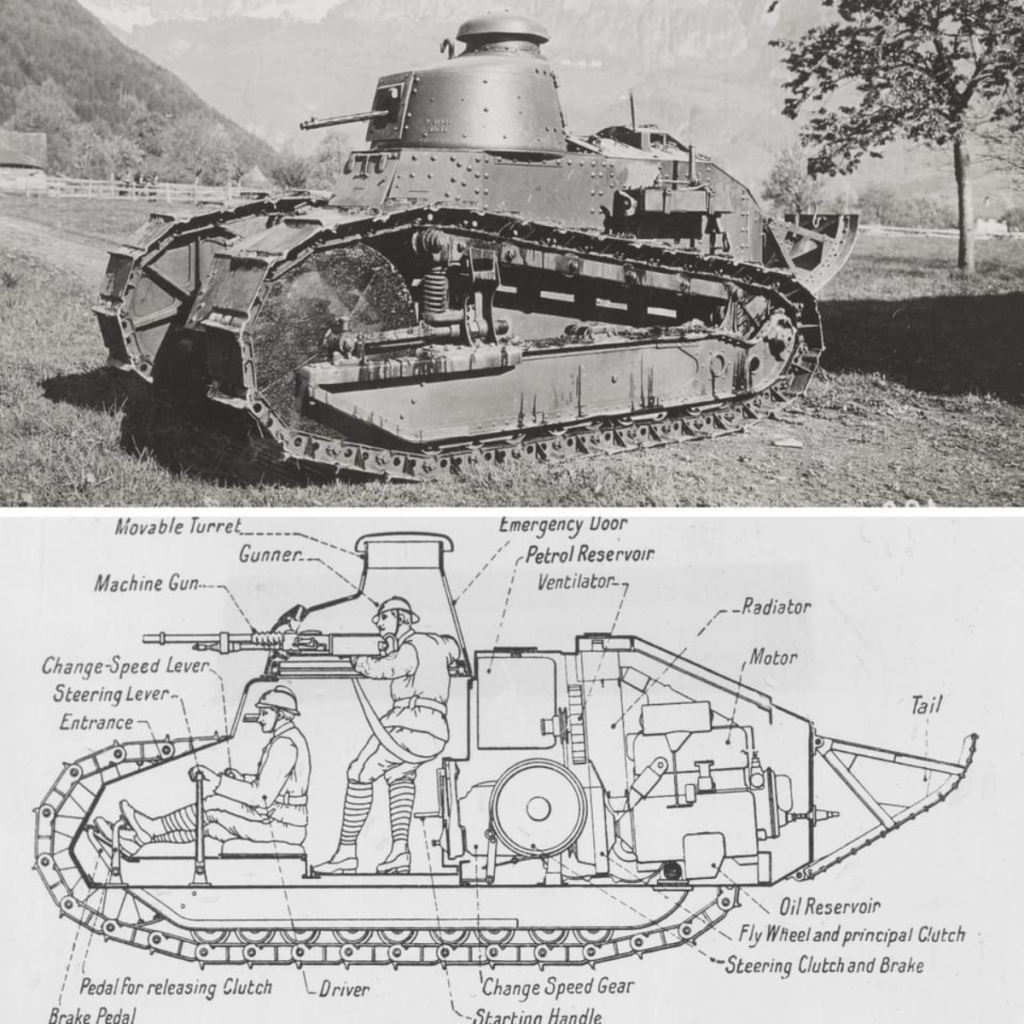

This Puny French Vehicle Was the First Great Tank
WORLD WAR I was shaped by a whole pile of new vehicles developed during the fours years of conflict. One hundred years after the start of the war, we’re taking a look back at the most remarkable vehicles—planes, cars, tanks, zeppelins—the war helped bring about.
Tanks play a fundamental role in modern warfare. It wasn’t always that way—a century ago, horses were still important to ground campaigns and motor vehicles were just beginning to ferry officers on European battlefields. To find the root of the tank’s dominance over how we fight now, we have to look back to May 1918, when France’s Renault FT tank first rolled into battle.
The FT has been called the world’s first modern tank. Much of the FT was designed by Louis Renault, founder of the French automaker that still exists today. French general Jean Baptiste Eugène Estienne, considered to be the “father of French tanks,” asked Renault to build a tank that was lighter and more nimble than the models already in service, which were large, heavy, and slow. Renault, though he had no experience with tracked vehicles, took up the challenge and ended up helping pioneer a century of armored vehicle development. As a cheap, lightweight, maneuverable, and comparably quick tank, the FT was designed to overwhelm enemy firing positions with sheer numbers.
It looks puny in comparison to the armored vehicles driving around today’s battlefields, but 100 years ago, it was a big deal. The 4.5L 4-cylinder Renault engine generated 39 horsepower, laughable in 2014, but a significant improvement over the single horsepower an actual horse could provide. It was started with either an external or internal hand crank, and could travel a bit more than 30 miles on a 25-gallon fuel tank. The tank had two tracked drive wheels to move over rough terrain. A rotating turret could be used to launch 37mm shells or fire a 7.92mm machine gun.
It’s possible the impact of the FT, which didn’t enter service until Germany was nearly defeated, was mostly psychological. The mere appearance of tanks would give “demoralized German troops an excuse to surrender,” says David Willey, curator of The Tank Museum in Dorset, England. Regardless, the FT, along with other tank designs, showed the enormous potential of armored vehicles on the battlefield.
The lightweight, two-man FT could swarm the enemy in force, repelling enemy fire and drawing attention away from regular troops who would walk in formation behind it. It eliminated the need to use horses to pull large guns that could fire at entrenched positions like hillside pillboxes and was much more agile than its heavier contemporaries. In the era of trench warfare, the FT naturally had a rounded tail that allowed it to cross the ditches without falling in. The general layout of the tank, with its engine in the back and driver in the front, is still used by modern tanks today.
The 7-ton FT first engaged the enemy in May 1918, using a combination of units firing either shells or machine guns. It proved to be highly capable when used in large numbers thanks to its nimble size and light weight. Unlike larger armored vehicles, it could navigate forests and other tricky landscapes, though it was limited to 4 to 5 mph. It was vulnerable to heavy weapons, particularly if it was separated from its infantry, and communication from the FT to other units like artillery could be nearly impossible.
The FT was designed to go into battle with two larger French tanks, the Schneider CA1 and the Saint-Chamond. It was expected to accompany and protect infantry as well as exploit breakthroughs made by its bigger brethren. One version of the FT17 carried radios to forward positions to allow the French to take quicker advantage of emerging opportunities. However, both the larger tanks were “major failures,” says Willey. “They seemed to get stuck or easily set on fire wherever they appeared and the planned use of the FT17 didn’t materialize.”
3,530 units were ordered originally, with production later increased and nearly 1,000 American copies built, though none of the American versions saw any combat because the war had ended by the time production was ramped up. Captain George S. Patton, who would come to greater fame in a later conflict, was one of the first U.S. officers to command the tank in battle.
The defeat of Germany in 1918 surprised many Allied war planners who had ordered thousands of FT tanks for future engagements. After the war, France had many to spare and after the war they were sold to or manufactured by at least 17 different countries, “often being used as the fledgling vehicles to begin the training of a nation’s embryonic tank force,” explained Willey.
The FT was fielded by some smaller countries as late as World War II, though they were vastly outgunned. They were used in many smaller conflicts as well, as the tank was exported to many other countries following the war.
Though thousands of units were built, as well as copies like the American M1917, less than 50 survive, including one nicknamed the “Five of Hearts” at the Fort George G. Meade Museum in Maryland, and another at The Tank Museum in Dorset, UK.
